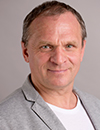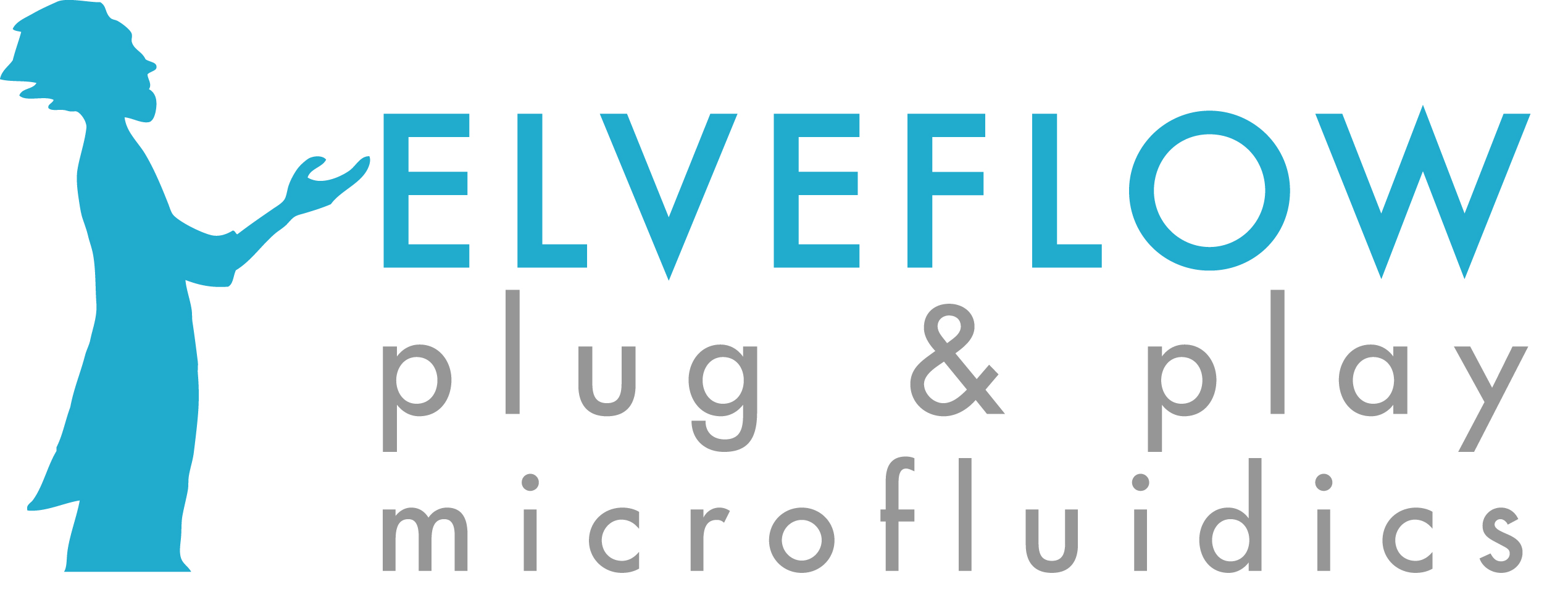Other Track AgendasBiosensors, Microfluidics and Lab-on-a-Chip Technologies | Organ-on-a-Chip Europe 2017 | Point-of-Care Diagnostics 2017 |

Wednesday, 10 May 201708:00 | Registration | |
Day One | | Session Chair: Peter Loskill, Assistant Professor for Experimental Regenerative Medicine; Attract Group Leader Organ-on-a-Chip, Fraunhofer Institute for Interfacial Engineering and Biotechnology IGB, Eberhard Karls University Tübingen, Germany |
| | 09:00 | Biomaterials Design for Experimental Organ Models
Gianluca Ciardelli, Professor, Polytechnic University of Turin, Italy
Engineered tissue models offer new options for a better understanding of disease progress and the development of new treatments. In this work biomimetic scaffolds are proposed as innovative myocardial and bone models. | 09:30 |  | Keynote Presentation Multi-Organ-Chip Technologies: Towards a Paradigm Shift in Drug Development
Uwe Marx, CSO & Founder, TissUse GmbH, Honorary Professor for Medical Biotechnology at the Technische Universität Berlin, Germany, Germany
The keynote summarizes latest achievements in the development of biology-inspired microfluidic microphysiological system approaches (organ-on-a-chip, body-on-a-chip). It furthermore highlights progress and challenges in industrial adoption of MPS-based approaches to address the prediction dilemma of drug testing. |
| 10:15 | Translational Applications of Microphysiological Systems (MPS)
Murat Cirit, Director at Translational Center of Tissue Chip Technologies, Massachusetts Institute of Technology (MIT), United States of America
Systems pharmacology approaches to microphysiological systems (MPS) enable mechanistic data interpretation and, hence, in vitro in vivo translation (IVIVT) of pharmacokinetics, pharmacodynamics and patient specific response biomarkers. | 10:45 | Coffee & Networking in Exhibition Hall | 11:15 | Extracellular Matrix Mimetic Hydrogels of Natural Polymers for Organ-on-chip Applications
Marcel Karperien, Professor, University of Twente, Netherlands
In this presentation I will describe our strategy to develop chemically defined substitutes for matrigel that can be applied in organ-on-chip models for formation of functional microtissues. | 11:45 | A New Cells-On-A-Chip Based on Vinyl Development for Real-Time Skin Monitoring
Miguel Holgado Bolaños, Group Leader, Universidad Politécnica de Madrid, Spain
This talk will present a new disposable biochip based on Vinyl and PDMS that can mimic skin physiology and architecture. | 12:15 | Biomembrane-on-a-chip
Yan Yan Shery Huang, Lecturer, University of Cambridge, United Kingdom
On-Chip Microvessel Platform for Cancer Invasion Studies. | 12:45 | Lunch & Networking in Exhibition Hall | 13:15 | Poster Viewing Session | 13:30 |  Free Workshop Free Workshop
Translating Customers Ideas into Microstructured Smart Polymer Parts Workshop
Iris Bergmair, Head of Sales & Business Development
| 14:15 |  Technology Spotlight: Technology Spotlight:
Linking the Liver – Interconnected Microphysiological Systems
David Hughes, Chief Technical Officer, CN Bio Innovations Ltd.
Interconnected microphysiological systems often feature a liver model. Research and development relating to linked gut-liver, PBMC-liver and pancreas-liver multi-organ systems will be presented.
| 14:30 |  | Keynote Presentation Human-Based “Body-on-a-Chip” for Drug Development
Michael Shuler, Samuel B. Eckert Professor of Engineering, Cornell University, President Hesperos, Inc., United States of America
We combine human tissue constructs, microfabrication, and physiologically based pharmacokinetic models to construct multiorgan models that are self-contained, operate upto 28 days and allow direct measurement of chemical, electrical, and mechanical responses to drugs in a serum free medium |
| 15:15 | Modelling the Eye with Microfluidics
Anderson Shum, Professor, Department of Mechanical Engineering; Director, Advanced Biomedical Instrumentation Centre, University of Hong Kong, Hong Kong
I will discuss our efforts in combining microfluidics and cell-culture to mimic the retinal environment of a human eye, and outline how these could facilitate the development of new surgical procedures.
| 15:45 | Coffee and Networking in Exhibition Hall | 16:15 | Advanced Cellular Models in Drug Safety Assessment - An Industry User Perspective
Cristina Bertinetti-Lapatki, Lab Head Mechanistic Safety, Roche Pharma Research & Early Development, F. Hoffmann-La Roche Ltd, Switzerland
| 16:45 | Microengineered Physiological Biomimicry: Human Organs-on-chips
Dan Huh, Associate Professor of Bioengineering and Wilf Family Term Endowed Chair, University of Pennsylvania, United States of America
| 17:15 | Drinks Reception in Exhibition Hall | 18:45 | End of Day One |
Thursday, 11 May 2017 |
Day Two | | Session Chair: Torsten Mayr, Associate Professor, Leader-Applied Sensors, Graz University of Technology Austria, Austria |
| | 09:00 | Advanced Integrated Optical Oxygen and pH Sensors for Organ on Chip Applications
Torsten Mayr, Associate Professor, Leader-Applied Sensors, Graz University of Technology Austria, Austria
Integrated optical oxygen, pH and glucose sensors are presented enabling monitoring of oxygen and glucose content and pH changes in microfluidic cell cultures or organ on chips with a high precision read-out. | 09:30 | | 10:15 | Physiological Scaling and Computational Models for Microfluidics
Arti Ahluwalia, Associate Professor, University of Pisa, Italy
Scaling in organ on a chip systems: how big is too small? A treatise on allometric scaling in-vitro. | 10:45 | Coffee & Networking in Exhibition Hall | 11:15 | Towards High Content Screening Platforms: Parallelizable Microphysiological Systems as In-vitro Models of Cardiac and Adipose Tissue
Peter Loskill, Assistant Professor for Experimental Regenerative Medicine; Attract Group Leader Organ-on-a-Chip, Fraunhofer Institute for Interfacial Engineering and Biotechnology IGB, Eberhard Karls University Tübingen, Germany
| 11:45 | Kidney on a Chip using Cell Sheet Engineering
Brian Derby, Professor, University of Manchester, United Kingdom
There is a need for an improved kidney-on-a-chip for applications in toxicity testing and early stage compound screening. The filtration structures in a kidney are thin cell sheets that act as membranes. Here we present a cell sheet concept for a more accurate representation of a kidney for in vitro organ models. | 12:15 | Barrier-on-chip Models using 3D Biological Scaffolds
Maria Tenje, Senior Lecturer, Uppsala University, Sweden
We show the structuring of 3D cell culture scaffolds using natural hydrogels defined in thickness and lateral resolution on the micrometer scale. These materials can serve as the basis of novel in vitro models. | 12:45 | Lunch & Networking in Exhibition Hall | 13:15 | Poster Viewing Session | 13:30 |  Free Workshop Free Workshop
The Fast Tracking Medical Diagnostics and Biosensor Technologies to the Market Workshop
Martin Peacock, Director
| 14:25 |  Technology Spotlight: Technology Spotlight:
High Resolution Flow Control for Physiological Conditions Mimicking
Sebastian Cargou, CEO, Elvesys
The human circulatory system comprises a complex network of blood vessels interconnecting biologically relevant organs and a heart driving blood recirculation throughout this system. Elveflow focuses on the development of high resolution flow controller enabling users to control the mimicked blood pressure and heartbeat rate within a microfluidic circulatory system.
| 14:30 |  | Keynote Presentation Navigating Tissue Chips from Development to Dissemination: A Pharmaceutical Industry Perspective
Lorna Ewart, Global Strategy Lead, AstraZeneca, United Kingdom
Microphysiological systems (best recognized as ‘organ chips’) are a rapidly developing in vitro technology that is providing unique opportunities to model the complexity of in vivo biology. The growing debate about the role of animal studies in a challenging rate of drug development attrition for both efficacy and safety has prompted excitement for the potential for greater clinical relevance of human-sourced microphysiological systems over traditional animal models. Attaining the full promise and impact of this innovation will take a very deliberate process of evolution. This presentation will outline a framework used at AstraZeneca to select the context of use for microphysiological systems and exemplify the type of data that is possible to achieve from such systems in drug development. Lastly, it will share an ongoing partnership between pharmaceutical industry scientists and NCATS that is facilitating the evolution of this technology. |
| 15:15 | Coffee & Networking in Exhibition Hall | 15:45 | Topologies, Analytics, and Automation for Microphysiological Systems
John Wikswo, Gordon A. Cain University Professor, A.B. Learned Professor of Living State Physics; Founding Director, Vanderbilt Institute for Integrative Biosystems, Vanderbilt University, United States of America
| 16:15 | Increased Physiological Relevance of Tumor Cells in Pre-clinical Research: The Pathway for Earlier and Higher Prediction of Drug Efficacy
Vitor Espirito Santo, Researcher, IBET – Instituto de Biologia Experimental e Tecnológica, Oeiras, Portugal, Portugal
Tumor microenvironment has an impact in disease progression and drug response. Herein we present a cell model system incorporating microenvironment features of tumor pathophysiology and the potential of this tool for pre-clinical research and drug discovery. | 16:45 | Close of Conference |
|

 Add to Calendar ▼2017-05-10 00:00:002017-05-11 00:00:00Europe/LondonOrgan-on-a-Chip Europe 2017SELECTBIOenquiries@selectbiosciences.com
Add to Calendar ▼2017-05-10 00:00:002017-05-11 00:00:00Europe/LondonOrgan-on-a-Chip Europe 2017SELECTBIOenquiries@selectbiosciences.com